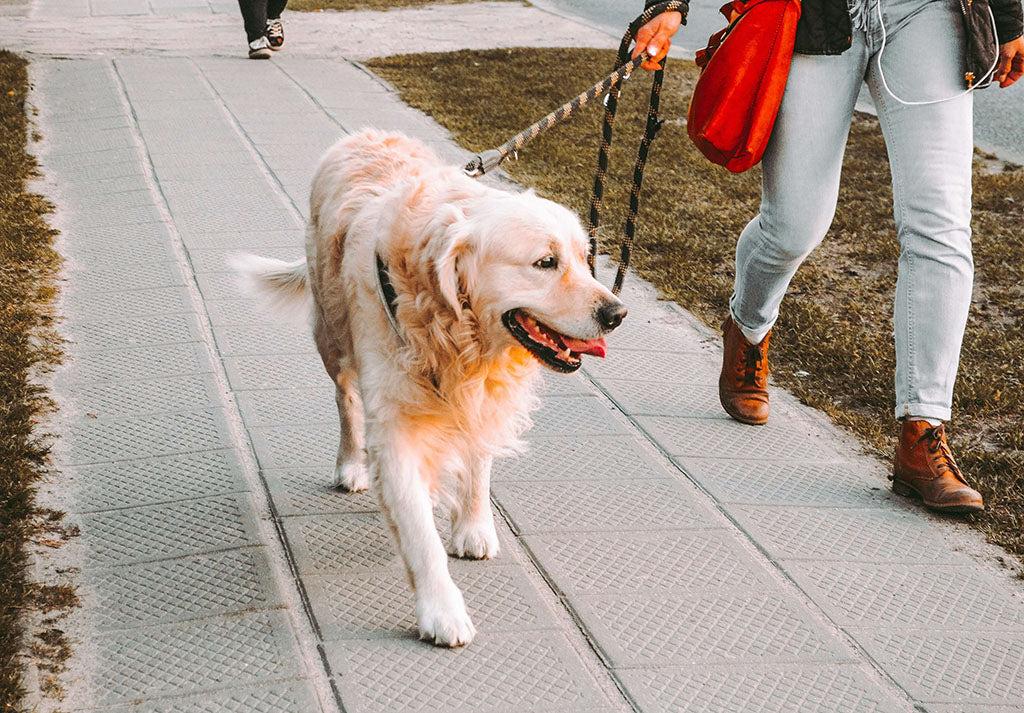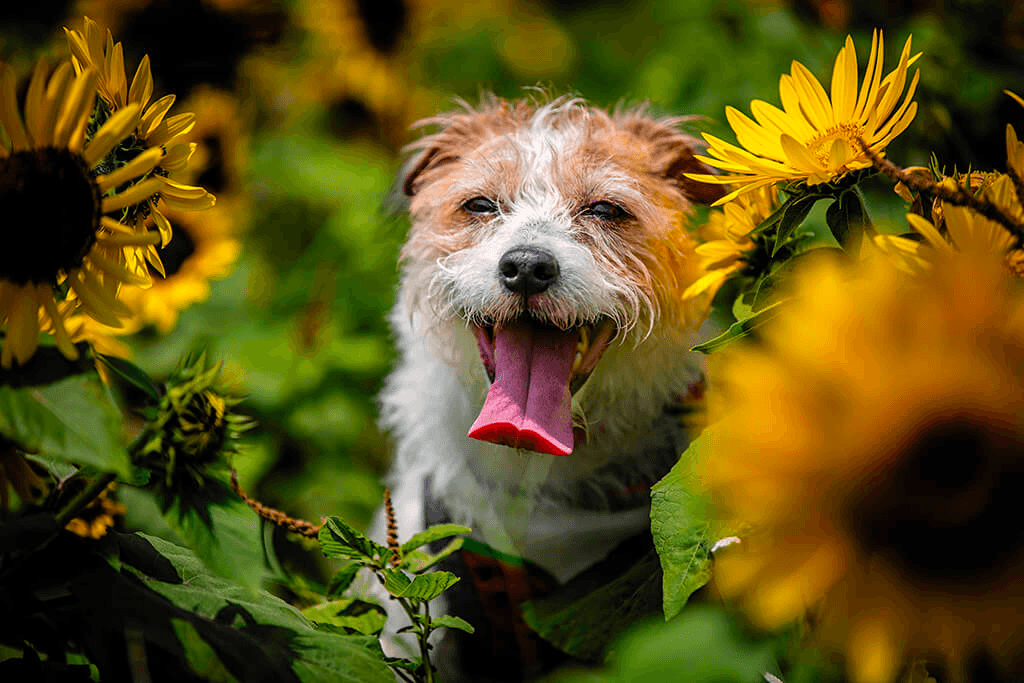Wondering how much exercise a dog needs? Dogs need 1-2 walks per day. The duration depends on age, breed, size and temperament.
- Home/
- Dog/
- Health & Wellness/
- How Much Exercise Does a Dog Need?
How Much Exercise Does a Dog Need?

Quick takeaway:
The amount of exercise your dog needs depends on several factors, including their breed, size, age, and temperament. While smaller dogs and young puppies often benefit from shorter, more frequent walks, they still require daily activity to support their physical development and mental stimulation.
Larger breeds and adult dogs typically need longer or more frequent walks, especially if they’re part of an active or working breed. For example, dogs like Border Collies or Golden Retrievers may need structured activity multiple times per day to stay happy and healthy.
As a general guide:
- A short dog walk may range from 5 to 15 minutes
- A longer dog walk may last 30 to 45 minutes, or more, depending on your dog’s energy levels and interest
Keep in mind that all dogs are individuals – some may thrive with less, others may need more. Always adjust based on your dog’s age, health, and behaviour. If you’re unsure, your veterinarian can help guide a routine tailored to your dog’s specific needs.
Use the printable dog exercise chart below as a helpful reference to plan an appropriate activity schedule for your pup.

How Often Should I Walk My Dog?
Just like humans, dogs need regular exercise to stay healthy – both physically and mentally. A daily walk isn’t just about stretching their legs; it’s a vital chance to explore, sniff their surroundings, and engage with the world beyond the front door. Even the most laid-back, home-loving pup benefits from a breath of fresh air.
For most healthy adult dogs, two walks per day is a solid baseline. These walks don’t need to be intense, but they should give your dog the opportunity to stretch their legs, sniff their environment, and burn off energy.
- Minimum: 1 walk per day
- Ideal for most dogs: 2 walks per day
- High-energy breeds: May require 3+ daily activity sessions
Walks also support your dog’s mental stimulation, not just physical exertion – sniffing, socializing, and exploring are just as tiring (and rewarding!) as running.
How Long Should Dog Walks Be?
The ideal walk length depends on your dog’s breed, size, health, and energy level.
Here’s a general guide:
| Dog Type | Recommended Walk Time |
| Toy breeds (e.g., Chihuahua) | 20–30 minutes, 1–2x per day |
| Small breeds (e.g., Dachshund) | 30–45 minutes per day |
| Medium breeds (e.g., Cocker Spaniel) | 60–90 minutes per day |
| Large breeds (e.g., Labrador) | 1.5–2 hours per day |
| Working/sporting breeds (e.g., Border Collie) | 2+ hours per day, often split into multiple sessions |
Puppies need short bursts of activity and plenty of rest. A common rule is 5 minutes of structured exercise per month of age, up to twice daily. Always check with your vet for age-appropriate limits.
Senior dogs may not need as much vigorous exercise but still benefit from gentle movement to support joint mobility and maintain weight.

How Breed, Age & Size Affect Your Dog’s Exercise Needs
Breed
High-energy breeds like Border Collies, Australian Shepherds, and Huskies were bred to work and need significantly more exercise than calmer breeds like Basset Hounds or Bulldogs.
Low-energy breeds may tire quickly or prefer brief play sessions over long hikes. Ignoring breed tendencies can lead to boredom, weight gain, or destructive behavior in active dogs.
Age
- Puppies have developing joints and short attention spans. Focus on short, frequent play sessions and supervised exploration.
- Adult dogs need the most consistent, structured exercise to burn energy and maintain condition.
- Seniors often slow down but still benefit from low-impact activities to keep joints moving and muscles engaged.
Size
- Small dogs may have tons of energy but tire quickly, so shorter, more frequent walks often work best.
Large dogs may be more prone to joint concerns, especially as they age, so low-impact but sustained exercise like walking or swimming can be ideal.
Printable Dog Exercise Chart

Types of Exercise for Different Activity Levels
If You’re Active
- Running or jogging together
- Agility training
- Hiking off-road or in dog-friendly trails
- Swimming, especially great for joint health
- Canine sports (flyball, dock diving, etc.)
If You’re Less Mobile
- Shorter leash walks around the block
- Tug-of-war or indoor fetch
- Puzzle toys and food-dispensing games for mental stimulation
- Obstacle courses in the yard or home
- Training sessions to reinforce obedience while keeping your dog mentally engaged
If You’re a Senior (or have a senior dog)
- Slow, regular walks with frequent breaks
- Indoor games using soft toys or rolled-up towels
- Massage or low-impact stretching routines (ask your vet for guidance)
- Short outdoor time to sniff, explore, and move at their pace
Even 10–15 minutes of low-intensity movement per session can benefit older dogs.
Final Thoughts: Giving your Dog The Right Amount of Exercise
So, how much exercise does a dog need? It depends on your dog’s age, size, and breed, but all dogs benefit from consistent physical and mental activity. Regular walks are essential, but they don’t have to be your only option.
Whether you’re out hiking trails or playing tug in the living room, the key is tailoring your dog’s routine to their individual needs and your lifestyle.
When in doubt, observe your dog’s energy levels. Are they pacing, chewing things, or acting restless? They might need more. Are they lagging behind on walks or reluctant to play? A lighter routine (and a vet check) may be best.
And remember: a tired dog is a happy dog.
 C
C



